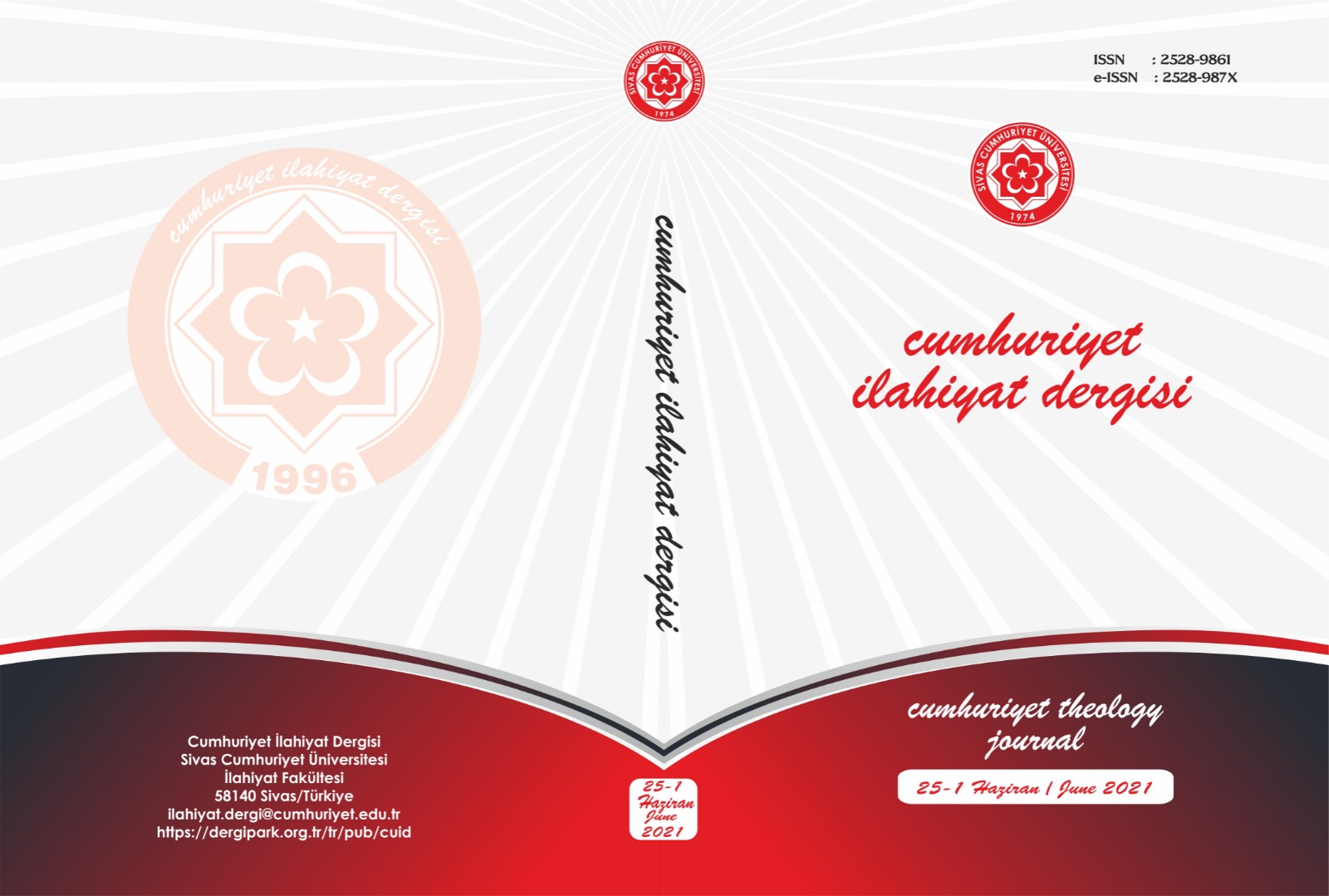Osmanlı Türkçesinde Kâf Harfi: Tasnif ve Seslendirme Meselesi
Kaaf Letter in Ottoman Turkish: Classification and Articulation Issues
Author(s): Reyhan KeleşSubject(s): Theology and Religion, Turkic languages
Published by: Cumhuriyet Üniversitesi İlahyat Fakültesi
Keywords: Turkish-Islamic Literature, Ottoman Turkish; Ottoman Turkish Alphabet; Kaaf (ك); Kaaf Arabic (ك); Kaaf Persian (گ); Kaaf Turkish (ڭ);
Summary/Abstract: Ottoman Turkish or Ottoman –as a mumpsimus – is basically Turkish language, over time it has been substantially influenced by Arabic and Persian. Its alphabet is based on Arabic letters. It has borrowed letters from Persian as well. Its vocabulary is essentially Turkish; however, it has borrowed words from Arabic and Persian at a substantial level. Arabic language attracted attention in mosques because it was the language of the religion, and in madrasahs because it was the language of science. As for Persian, it spread in Turkish states as the literary language and this lifted its effectiveness especially in Seljukian palaces. Arabic writing, which is the common writing form for both languages, became the writing form for virtually the entire Islamic world, and thus, Turks employed Arabic writing form to be able to write in their own languages. According to resources, the first written Turkish language grammar book is Muyassiratu’l-ulum by Bergamalı Kadri. Apart from this book, the earliest sources on Ottoman Turkish grammar and principles were started to be written after 1840. While writing activities about Ottoman Turkish grammar increased in late 19th and early 20th centuries, they have gained further acceleration nowadays. In fact, the statement about a generation who cannot read the grave stones of their ancestors has been influential. After providing education on Ottoman Turkish as a compulsory or elective course as part of high school syllabus by the Ministry of National Education, and due to the natural increase in the numbers of students in Theology and Literature Faculties of universities which are, nowadays, almost in every city, writing activities about Ottoman Turkish have become desirable and a sector has been formed in this field. Many researchers who teach this course started to write an Ottoman Turkish grammar book to use in their own lessons, and this caused the number of Ottoman Turkish publications to increase in the market. According to our findings, grammar books of Turkey Turkish were also written in foreign languages, in late 19th and early 20th centuries. Through writing Turkey Turkish grammar work in German, French, English, Italian, Latin, Hungarian, Russian and Greek, foreign authors aimed to teach Turkish to their own nations. Although all of these works were produced in order to contribute teaching of Ottoman Turkish, efforts to generate solutions for certain problematic issues became a lot more complicated. To illustrate, when case about kaaf (ك) letter, which is the subject of this study, is examined either in grammar books written after 1840s, or in the books written by contemporary researchers, two aspects are noteworthy. One of these is the change in the number of letters forming the alphabet, the other one is the classification and nomenclature regarding kaaf (ك) letter, which effects this number. That Ottoman Turkish consists of three languages and uses Arabic alphabet and vocabulary from three different languages resulted in problems like difference in the number of letters in the alphabet and problems in the articulation of certain letters. It has been determined that one of the reasons why the number of letters in the alphabet is different is directly letter kaaf and that there are problems in both articulation and classification of the letter kaaf used in Arabic, Persian and Turkish words. When the books written on Ottoman Turkish grammar starting from the 19th century until today are analysed, no studies have ever been done either about the changes in the numbers forming the alphabet, or about the classification and articulation problems of letter kaaf (ك) and about the solution offersed to these. In this article, by attracting attention to both the number of letters in the alphabet, and to the classification and articulation problems of letter kaaf (ك), findings regarding the solutions of these problems are presented. The study consists of three main chapters. In the first chapter, the function of various letters is presented and especially the effect of kaaf on the number of letters in Ottoman Turkish alphabet is elaborated and after the analyses, the number of letters is determined. In the second chapter, triplet, quartet and quintet classifications of letter kaaf are examined and its nomenclature and articulations are analysed. In the last chapter, problems about classification and articulation of kaaf are evaluated and a new classification is suggested. Yet, it is obvious that either this classification or the previous ones do not contribute to the question of which sound to use while pronouncing kaaf. Therefore, at the end of the study, some determinations have been made for solving the problem of kaaf’s articulation.
Journal: Cumhuriyet İlahiyat Dergisi
- Issue Year: 25/2021
- Issue No: 1
- Page Range: 195-216
- Page Count: 22
- Language: Turkish

